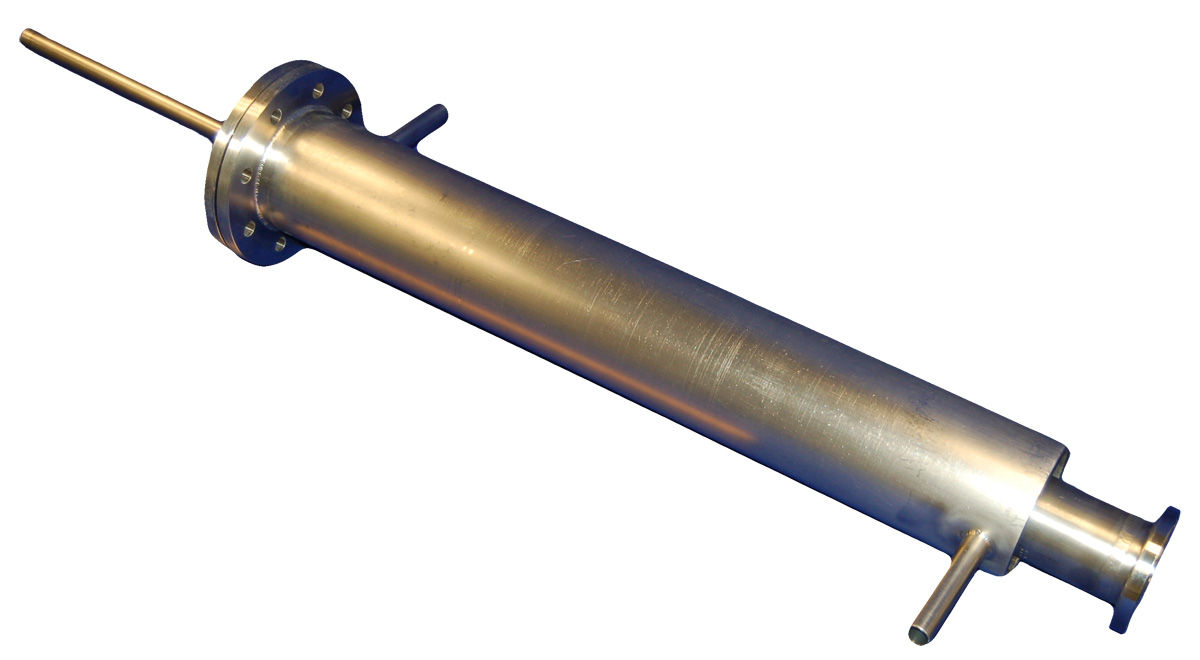
Precision Combustion, Inc. (PCI) is developing a downhole catalytic combustor steam generator for efficient production of methane from its hydrate. Gas hydrate is a crystalline solid (see photo at right) consisting of gas molecules, each surrounded by a cage of water molecules. The gas is held in this state by a combination of low temperature and high pressure. If the gas could be effectively, safely and controllably tapped, gas hydrates offer the potential for making major contributions to meeting DOE primary objectives regarding energy needs and energy independence while substantially expanding available world energy reserves.
Methane hydrate deposits are abundant throughout the world and have been estimated to represent the greater portion of the world’s fossil energy reserves. Estimates of hydrate natural gas on the North Slope of Alaska beneath existing facilities are in the 10’s of trillions of cubic feet, with additional 100’s of trillions of cubic feet in areas that do not yet have infrastructure. The estimates for hydrate natural gas beneath the U.S. continental margin is even larger, on the order of 1,000’s of trillions of cubic feet (Sloan, et. al, 2008).
The U.S. Geological Survey estimates that methane hydrat may contain more organic carbon than all the world’s coal, oil, and non-hydrate natural gas combined. The magnitude of this previously unknown global storehouse has raised serious inquiry into the possibility of using methane hydrate as a source of energy.[U.S. DOE Methane Hydrate Program].
Even a deposit as thin as fifty feet in height contains an intriguingly large amount of gas. Such a single six square mile deposit in the arctic or Gulf of Mexico or off the Oregon coast with hydrate in only 50% of the pore volume would contain over 200 billion cubic feet of natural gas worth $400Mil at $2/Mscf. Thus, extraction of methane from hydrates could provide an enormous energy and petroleum feedstock resource. Additionally, conventional gas resources appear to be trapped beneath methane hydrate layers in ocean sediments.
[U.S. Geological Service]
Results from the U.S. Department of Energy Small Business Innovation Research project show that natural gas can be produced from its hydrate at an energy cost of approximately 15% of the heating value of the produced gas. A 5″ OD device was designed to provide heat rates in the range of 50 MMBtu/hr at 100 atm. This is enough for 8.0 MM scf/day natural gas production assuming 15% consumption for production, as predicted by our modeling. Bench scale operation met the operational requirements to move to full scale high pressure single combustor testing, and a full scale design has been completed. The design is now ready to provide prototypes to producers and developers interested in a thermal stimulation tool for production of gas from hydrates.
Contact PCI to learn more about how our solutions may be adapted for your needs.


